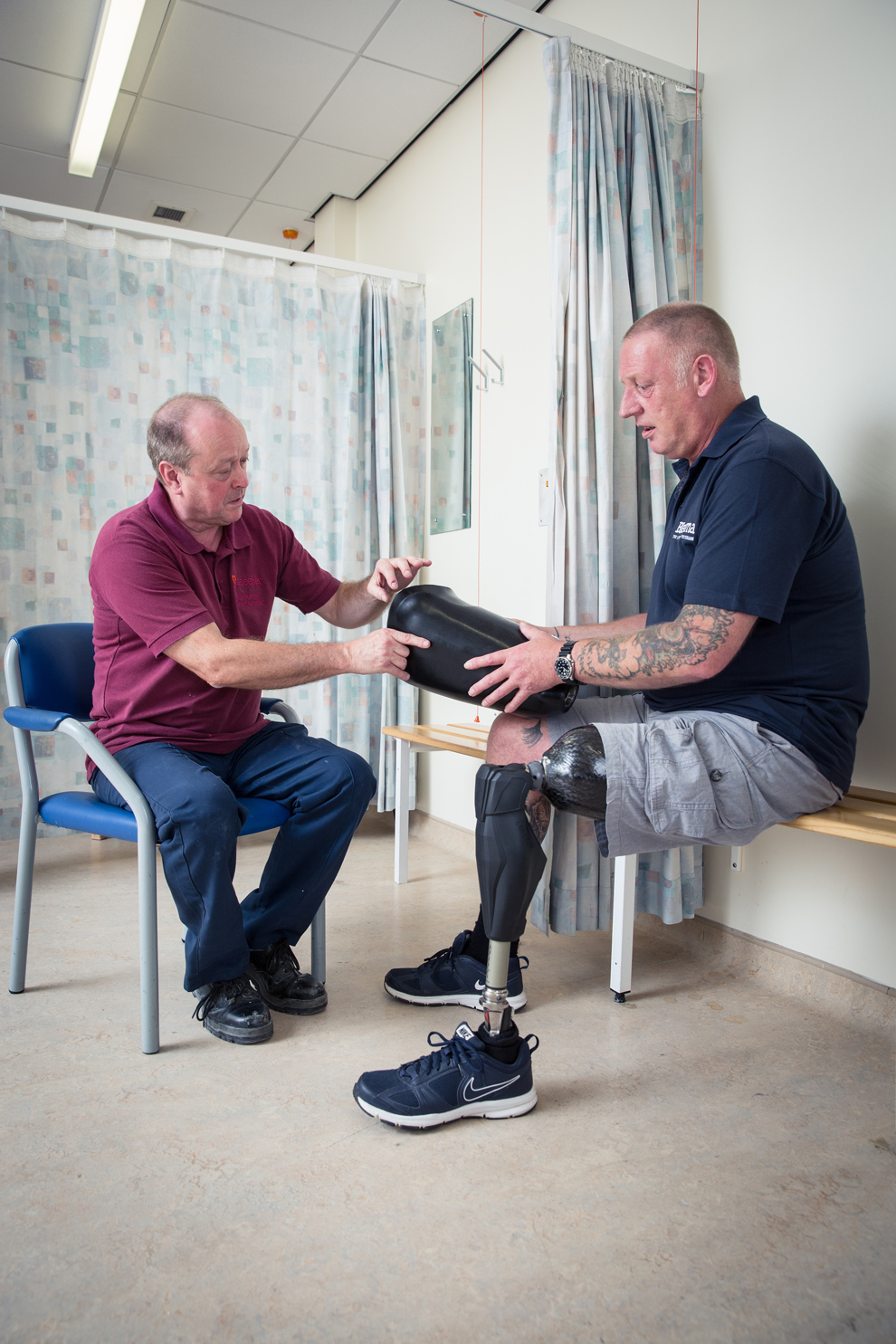What is Phantom Limb Pain?
Phantom limb pain sufferers experience acute sensations of pain that appear to come from the limb that has been amputated. It is estimated that between 50 and 80 per cent of amputees develop phantom limb pain post amputation. The condition is more common in women than in men, and appears to be more common in upper limb amputations.
The term ‘phantom’ does not mean that the pain is imaginary. Phantom limb pain is a very real phenomenon which has been confirmed using brain imaging scans to study how nerve signals are transmitted to the brain. The symptoms of phantom limb pain can range from mild to severe. Some people have described brief ‘flashes’ of mild pain, similar to an electric shock, that last for a few seconds. Others have described constant, severe pain.
The causes of phantom limb pain are unclear. There are three main theories:
- The Peripheral Theory argues that phantom limb pain may be the result of nerve endings around the stump forming into clusters, known as neuromas. These may generate abnormal electrical impulses that the brain interprets as pain.
- The Spinal Theory suggests that the lack of sensory input from the amputated limb causes chemical changes in the central nervous system. This leads to ‘confusion’ in certain regions of the brain, triggering symptoms of pain.
- The Central Theory proposes that the brain has a ‘memory’ of the amputated limb and its associated nerve signals. Therefore, the symptoms of pain are due to the brain trying to recreate this memory but failing because it is not receiving the feedback it is expecting.
Treating Phantom Limb Pain

It can be difficult to treat phantom limb pain as the effectiveness of treatment varies between different people. Several types of treatment may need to be tested.
Medication and pain management
Medication, prescribed by a doctor to help relieve pain from nerve damage or to attempt to block pain signals, may include:
- anticonvulsants such as carbamazepineor gabapentin
- antidepressants such as amitriptyline or nortriptyline
- opioids such as codeine or morphine
Non-Invasive Therapy
Several non-invasive techniques may help to relieve phantom limb pain. They include:
- applying heat or cold such as using heat or ice packs, rubs and creams
- massage to increase circulation and stimulate the muscles
- acupuncture is the technique of inserting needles into the skin at specific points on the body that are thought to stimulate the nervous system and relieve pain
- transcutaneous electrical nerve stimulation (TENS) involves using a small electronic device that is connected to a series of electrodes. The electrodes deliver small electrical impulses to the stump. TENS is thought to work by disrupting the passage of pain signals to the brain and stimulating the release of the body’s natural painkilling chemicals known as endorphins.
Mental Imagery
Research carried out in 2008 found that when people spent 40 minutes imagining they were using their phantom limb, such as stretching out their ‘fingers’ or bunching up their ‘toes’, they experienced a reduction in pain.
One technique, Mirror Visual Feedback, involves using a mirror box to create a reflection of the other limb. Some people find that doing exercises and moving their other limb can help to relieve pain from a phantom limb.
This may be related to the Central Theory of phantom limb pain (that the brain is looking to receive feedback from the amputated limb) and these mental exercises may provide an effective substitution for this missing feedback.
More information about the recommended treatments for phantom limb pain can be found on the Limbless Association’s website (www.limbless-association.org).
We can help
We are dedicated to assisting serving and ex-Service men and women who have suffered life-changing limb loss or the use of a limb, an eye or sight. We support these men and women in their communities throughout the UK. Click the link below to find out the different kinds of support we offer.
Get Support